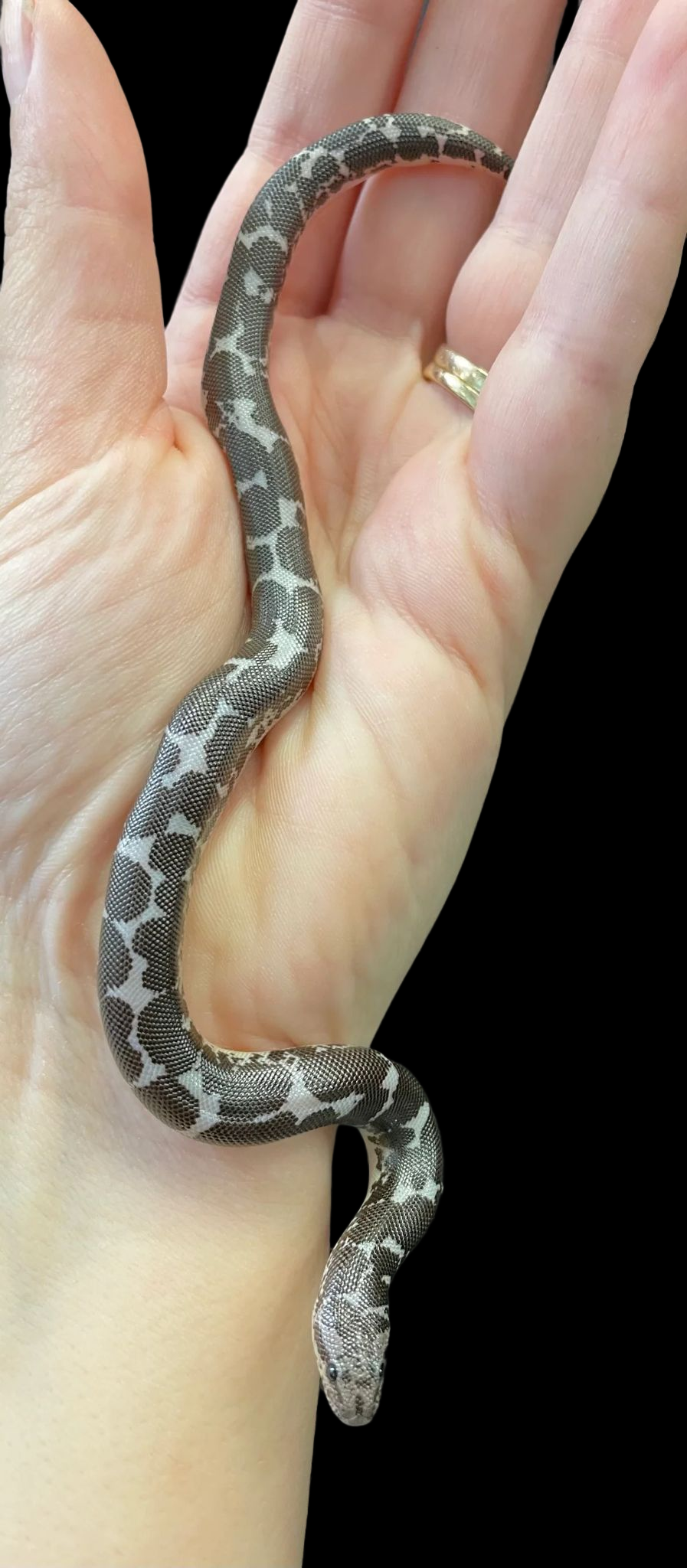Photo Disclaimer
Description
Kenyan Sand Boa (Anery Het Albino / Paradox Albino)
Eryx colubrinus
Common Names: Kenyan Sand Boa, East African Sand Boa
Species Overview
-
Size: Adults generally reach 18–30 inches (45–75 cm), with females often larger and heavier-bodied than males.
-
Appearance:
-
Anery (Anerythristic): Removes red and orange pigments, leaving a gray, black, and white pattern.
-
Het Albino: Carries the recessive albino gene but does not visually express it.
-
Paradox Albino: A visually unusual form of albino in which random patches of darker pigment appear against the bright orange-and-white albino base. This gives the boa a unique “paint-splattered” look.
Together, these traits produce a boa with high-contrast patterning, sometimes with paradox markings layered over typical anery or albino coloration.
-
-
Distribution: Native to Kenya and surrounding regions of East Africa.
-
Habitat: Inhabits dry scrubland, sandy savannahs, and deserts, where they burrow in loose soil.
-
Behaviour: A fossorial ambush predator, usually buried beneath the substrate with only the head visible, striking quickly at prey.
Captive Care
-
Enclosure: A 20-gallon long tank or equivalent enclosure works for most adults. Provide deep substrate (sand, aspen, or soil/sand mix) for burrowing. Include a water dish and at least one secure hide.
-
Temperature & Humidity: Keep a gradient of 78–82°F (25–28°C) with a basking spot of 90–95°F (32–35°C). Nighttime temps can drop to 72–75°F (22–24°C). Humidity should remain 30–50%, replicating their arid natural range.
-
Diet: Juveniles feed every 5–7 days on pinky mice, while adults are fed small rodents every 10–14 days. Monitor weight closely to prevent obesity.
-
Behaviour in Captivity: Kenyan sand boas are calm, slow-moving, and tolerate handling well. They are secretive and spend most of their time hidden beneath substrate.
-
Special Considerations: A deep, loose substrate is essential for natural burrowing behaviour.
Genetics Note
-
Anery (Recessive): Removes red/orange pigments, producing a gray-and-black appearance.
-
Albino (Recessive): Removes melanin, producing orange-and-white coloration. This individual is heterozygous (Het) for Albino, meaning it carries but does not express the gene.
-
Paradox Albino (Random Expression): Paradox Albinos visually express albino coloration but retain random darker patches of pigment, giving a mottled or “paradox” appearance. This is not fully understood genetically but is passed down in selective breeding.
-
Core care and husbandry remain identical to normal Kenyan Sand Boas.

